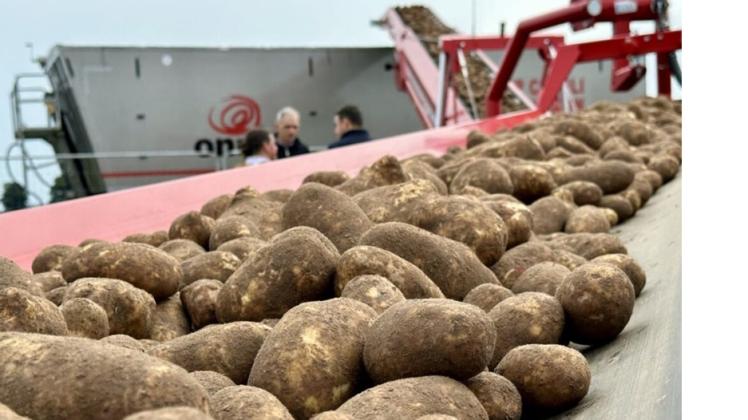EU: Potato market in dire condition: Are farmers on the brink?
The situation on the European potato market is currently particularly difficult, marked by a drastic drop in prices and a number of challenges that threaten the stability of the sector.

Producers who until recently saw the processing industry as constantly developing now realize that they have fallen into a trap.
Field Alert: Potato Prices Are Plunging
The end of the season is marked by very low prices, and preliminary estimates indicate an increase in potato area of around 5% in the NEPG zone (i.e. by 25,000 hectares), which further worsens the market prospects. Official statistics on area, divided into table potatoes, seed potatoes and starch potatoes, are not yet available, but estimates will be refined in the coming weeks. Despite recent rainfall, drought remains a serious problem. In addition, post-emergence herbicides, which have some phytotoxicity, may have slowed plant growth and, together with drought, affected final yields.
advertisementA Confluence of Misfortunes: Factors That Destroy the Market
Potato producers are still wondering why prices have fallen so drastically. The sharp drop in prices, from €30 per 100 kg at the end of February to €7.50 per 100 kg today, is the result of a combination of factors that developed at around the same time.
First, exports of frozen fries and other potato products started to slow down last year, and global market conditions for processed products have worsened. Trade in products from the EU-4 region (Belgium, Germany, France and the Netherlands) fell by 1.8% in volume between 2023 and 2024, a historic drop (outside the Covid crisis). The average selling price, which increased by 64% between 2021 and 2023, stagnated in 2024 and is set to decline in 2025. Competition in Asian markets is real, with China and India increasing their exports tenfold in 5 years.
Secondly, it took some time to realise that production costs were not only getting higher for producers, but also that the prices of European frozen fries were higher than those of Canada, China, India or other new players in the processing market. New taxes and tariffs introduced by the US president slowed or stopped European exports of processed products. The economic uncertainty caused by the US president also weakened the US dollar, making European products more expensive.
Moreover, in recent years, few other crops have been more profitable for farmers than potatoes. Very high free market prices in late spring 2023 and 2024, although only about 5% of the global harvest, led farmers to believe that low prices would never be repeated. In addition, serious processing errors were made in the 2024 crop, resulting in poor quality fries and weak sales. Early and main varieties were planted historically early. The sector realized that stocks from the “old” harvest would quickly weigh on the market when the new harvest was announced earlier than usual. Several rains in April, May and early June, although historically much lower than usual, temporarily averted the specter of severe drought and helped emerging potatoes to develop very quickly, which in turn prevented prices from stabilizing earlier or rising again.
European potato under pressure
European producers operate in an increasingly globalized market, where competition is strong and the market itself is sensitive, with an increasing number of players from different parts of the world. The market for processed products, especially fries, continues to grow, but competition with other global players is becoming increasingly important.
Production costs for European producers have been rising steadily in recent years. European prices for frozen fries and other processed products are higher than Canadian prices, and even higher than Chinese or Indian prices, mainly due to higher energy and transportation costs. It is cheaper for Egyptian, Indian or Chinese fries processors to export to their neighbors than for European processors, whose transportation routes are much longer.
In addition, European farmers not only have higher production costs, but also have to cope with more difficult environmental problems and stricter regulations. Climate change is also faster and more significant on the European continent (than in other parts of the world), and society and governments are placing much more demands (in terms of reduced spraying, compliance with nitrate standards, using less water, reducing the carbon footprint, etc.) than on producers in the rest of the world.
At the same time, additional soil problems (nematodes, wireworms) and emerging diseases, as well as stricter legislation, make potato production technically and economically more difficult and financially riskier.
Threats and hopes. What is the future of the industry?
Producers have probably overestimated the long-term profitability of potatoes and should be aware of the many constraints before governments intervene with even more regulation. This could include tighter restrictions on crop rotation, a ban on cultivation in certain risk areas (such as those at risk of water pollution) and stricter regulations on the use of plant protection products.
Fuente: warzywa.pl










